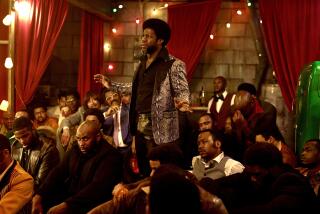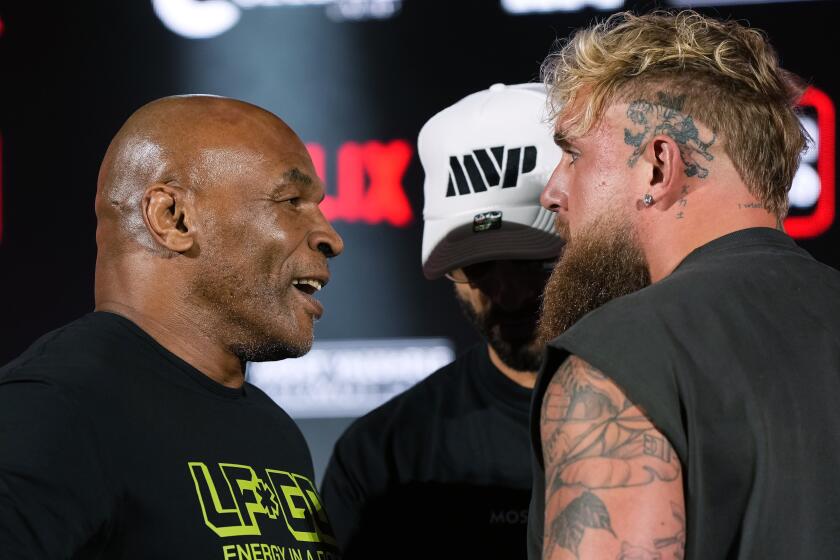Unforgettable
In 1954 in a gym on South 4th Street in Louisville, Ky., 12-year-old Cassius Clay, weighing all of 89 pounds, fought his first bout. The fight lasted three rounds, and Clay won in a split decision. Hands over his head, triumphant, he announced to the few who had gathered to watch the fight that soon, very soon, he would be “the greatest of all time.”
How and why this cocky boy from Louisville metamorphosed not only into one of the finest fighters of all time but also into the world-famous icon Muhammad Ali is the subject of David Remnick’s fascinating “King of the World.”
Remnick, the Pulitzer Prize-winning author of “Lenin’s Tomb” and the newly appointed editor of the New Yorker, does a fine job analyzing Ali’s impact on boxing and his even greater influence on American society. Ali, “a molder of his age and a reflection of it,” defied expectations and stereotypes. “I had to prove you could be a new kind of black man,” Ali told the author. “I had to show that to the world.” And he did so--gloriously.
According to Remnick, Ali’s originality can best be understood by comparing his actions and behavior to those of two black heavyweight champions: Floyd Patterson and Sonny Liston. Both Patterson and Liston were weighed down by expectations of how a champion should behave, in particular a black champion, in post-World War II America. Patterson suffered from an innate need to please and a huge fear of letting people down. Charles Larson, president of the National Boxing Assn., expressed the feelings of most Americans when he said: “Patterson is a fine representative of his race, and I believe the heavyweight champion of the world should be the kind of man our children could look up to as they have always done, as hero-worshipers.” Patterson was a favorite of reporters like Jimmy Cannon of the New York Journal American and Red Smith of the Herald Tribune, who liked the fact that “he was always so cooperative, he was open and polite.” And they liked him because he was not Liston.
Liston knew the score. He told a reporter: “A boxing match is like a cowboy movie. There’s got to be good guys and there’s got to be bad guys . . . so I’m the bad guy.” Even President Kennedy agreed; he told Patterson when he visited the White House: “You’ve got to beat this guy.” What was so awful about Liston? He was a former criminal who had served time for armed robbery and was known to have associations with the mob. (The fact that just about everyone in boxing did at that time did not seem to matter.) On the surface, Liston seemed unintelligent and uncaring. However, James Baldwin saw through Liston’s tough veneer when he spent time with him before the 1962 Patterson-Liston fight in Chicago’s Comiskey Park. “And while there is a great deal of violence in him,” he wrote, “I sense no cruelty at all. On the contrary, he reminded me of big, black men I have known who acquired the reputation of being tough in order to conceal the fact that they weren’t hard. Anyone who cared to could turn them into taffy. . . . [H]e has a long tale to tell which no one wants to hear.”
And where did Ali fit into all of this? Before the start of the Patterson-Liston fight, the ring announcer introduced past champions. Ali had won a gold medal in the light heavyweight division at the 1960 Rome Olympics and was included in the introduction. Joe Louis, Rocky Marciano, Archie Moore and others walked somberly into the ring and waved at the crowd. Ali pranced in, declaring himself “the prettiest, the greatest, the king of the world.” Ali was “the only noncombatant met with boos” that evening. Jeers or no, Ali had made his point: He would be his own man.
And just what kind of man was he? On the one hand, Ali was remarkably brave. His profession demanded it. However, he did have his demons. Ali was so afraid of flying that he actually wore a parachute on the plane traveling to the Rome Olympics. The future heavyweight champion of the world took to kneeling in the middle of the aisle--praying--after the plane experienced turbulence. And despite the fact that Ali often mercilessly ridiculed his opponents before a bout, calling Liston “that big ugly bear,” he cared deeply what Louis and Patterson thought of him. When, on separate occasions, the two did not respond enthusiastically to him, he felt the sting, and in the case of Patterson, he returned it in kind. After winning the gold medal, Ali felt Patterson did not act respectfully toward him when he approached him in the Olympic Village: “Floyd congratulated me with a milquetoast handshake. It hurt me. That cat insulted me and someday he’ll have to pay for it.” Anyone who watched Ali dismantle Patterson in the ring in 1965 saw Ali exact his revenge.
Ali was also contradictory when it came to the Nation of Islam. Although he embraced the teachings of Elijah Muhammad, he had a tough time adhering to Muslim ideology when it came to the opposite sex. Ali’s great weakness was women, and his philandering was so out of control for a time that his own doctor, Ferdie Pacheco, took to calling him a “pelvic missionary.” However, Ali took his faith seriously. In fact, it was his strong love of the Muslim religion that led him to the two defining moments of his career, both of which took place outside the ring and led directly to Ali’s transcendence from mere athletic champion to cultural hero.
The first moment came in 1964. Ali was finally given a chance to fight for the heavyweight championship against Liston in Miami. Ali’s association with the Nation of Islam and his close friendship with Malcolm X led promoter Bill MacDonald to threaten to call off the fight. MacDonald was worried about bad publicity because Ali had put Malcolm and his family up at a local hotel, and the two men would often be seen together. Ali, who had wanted the championship since he was 12, did not hesitate. “My religion is more important to me than the fight,” he told MacDonald. Although a compromise was made so the fight could go on (Malcolm X was asked to leave Miami and come back for the fight), Ali had not backed down. “I’m not a Christian anymore. I know where I’m going. . . . I don’t have to be what you want me to be. I’m free to be what I want.”
The second moment followed in 1966, after Ali had changed his name from Cassius Clay. Although the United States was fighting in Vietnam, Ali refused to be drafted. His response: “I ain’t got no quarrel with them Vietcong.” Ali was harassed by reporters and received death threats. Once again, Ali did not waver: “Why should they ask me to . . . drop bombs and bullets on brown people in Vietnam while so-called Negro people in Louisville are treated like dogs?”
Ali was stripped of his championship and did not fight professionally for three years--by the time he came back to boxing, the climate had changed, as had people’s perceptions of him. He was now someone people looked up to. As Ali’s friend, the comic Stepin Fetchit, said: “He’s like one of those plays where a man is the villain in the first act and then turns out to be the hero in the last act.”
No doubt, Ali stayed in boxing too long. He now suffers from Parkinson’s disease brought on by too many bouts, too many blows to the head. But even in this, Ali goes back to his faith: “God’s showing me that I am just a man like everyone else. . . . You can learn from me that way.” It is hard to criticize a man who acknowledges his faults and offers them up as life lessons. To Remnick’s credit, his book avoids hyperbole and provides a balanced and realistic account of Ali’s career.
Throughout the years, various people, including Ali’s father, have taken credit for “creating” Ali. They have said they helped him write his poetry (“float like a butterfly, sting like a bee”) or choreograph his pre-fight shtick. However, Ali always was and will be his own man. “When you want to talk about who made me,” he once told a reporter, “you talk to me. Who made me is me.” Anyone who reads Remnick’s eloquent tribute to the champion will have no doubt about that.
More to Read
Go beyond the scoreboard
Get the latest on L.A.'s teams in the daily Sports Report newsletter.
You may occasionally receive promotional content from the Los Angeles Times.










